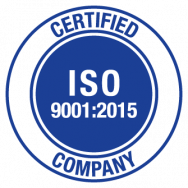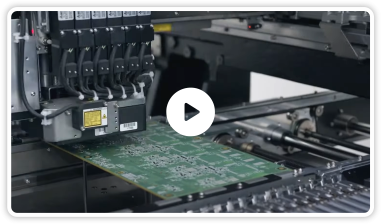Rush PCB makes Aluminum PCBs, the most popular among metal core boards. Our aluminum substrate PCBs use aluminum core as the base material, and standard FR4 over it. The aluminum base acts as a thermal clad layer for dissipating heat efficiently, keeping heat producing components cool, thereby increasing the overall performance of the board and the device. Among all the aluminum-based PCB manufacturers, our customers consider our aluminum PCBs as the most useful solution to high power applications.
Why Aluminum PCBs?
We use aluminum as the thermal base material because it has many advantages:
Thermal Management: Electronic components are very susceptible to damage from high temperatures. Therefore, it is necessary to keep temperatures within limits by dissipating heat from electronic components. Aluminum, being a good conductor of heat, transfers heat away from hot components, thereby keeping them cool and preventing any damage.
Non-Hazardous & Recyclable: Aluminum is a non-hazardous metal according to RoHS and WEEE requirements. Moreover, it is possible to recycle aluminum. Even when discarded in a landfill, aluminum does not harm the soil or water bodies.
Durability: Unlike fiberglass or ceramic bases, aluminum offers greater durability and strength to a PCB and its product. Being a sturdy base material, it provides support, preventing accidental breakages during assembly, handling, and regular use of the printed circuit board.
Lightweight: Although highly durable, aluminum is a lightweight material. Apart from providing strength and resilience, aluminum does not add much extra weight to the product.
For a free quote on Aluminum PCBs, visit our quote page!
How We Make Aluminum PCBs?
Regular aluminum PCBs usually have three major layers:
- Copper Layer
- Insulating Layer
- Metal Substrate
Copper Layer
For the copper layer, we typically use electrolytic copper foil, which we etch to form the printed circuit. This layer holds the SMD components and copper traces on the layer form the necessary interconnections. When compared to a traditional FR4 PCB of the same line width and copper weight, the presence of the aluminum base allows the board to carry more current without heating up.
Insulating Layer
Forming the core of the board, the insulating layer functions as the electrical insulator, heat conductor, and the bonding material between the copper layer and the aluminum substrate. In the entire buildup, the insulating layer also acts as a thermal barrier for the heat flow from the circuit to the aluminum. Therefore, better the thermal conductivity of the insulating layer, better is the heat management, and lower is the temperature rise of the components. High thermal conductivity not only increases the power output, it also extends the life-span of the board.
Metal Substrate
We choose a metal for the substrate depending on several factors such as cost, weight, hardness, strength, thermal coefficient of expansion, and thermal conductivity.
A comparative comparison of various metals for cost and technical performance as above shows aluminum to be the optimum choice. Aluminum plates are available as 1000, 1060, 6061, and so on. Depending on requirements for even higher thermal conductivity and mechanical properties, we use other metals in place of aluminum. These include stainless steel, copper, iron, and silicon steel.
Applications of Aluminum PCBs
Lamps and Lighting: This area of applications is the largest for aluminum PCBs. LEDs and other energy saving lamps and lighting systems in the market use aluminum PCBs in large scale.
Power Modules: Rectifier bridges, solid-state relays, inverters, and other power modules use aluminum PCBs.
Computer Electronics: Power supplies, CD and DVD drives, hard disk drives, and Mother boards use aluminum boards extensively.
Automotive Sector: Power supply controllers, ignition, electronic regulators, lamp drivers, motor controllers make extensive use of aluminum boards.
Office Automation: Power supplies, motor drives, printer heads, and other power modules use aluminum PCBs.
Communication Equipment: Transmitter circuit boards, filtering equipment, high frequency amplifiers, antenna circuits typically use aluminum boards.
Power Supplies: Switching regulators, AC/DC converters, linear regulators use aluminum PCBs for thermal management.
Audio Equipment: Power amplifiers, pre-amplifiers, audio amplifiers, balanced/unbalanced amplifiers, input/output amplifiers make extensive use of aluminum PCBs.
For more information, please contact us now.









